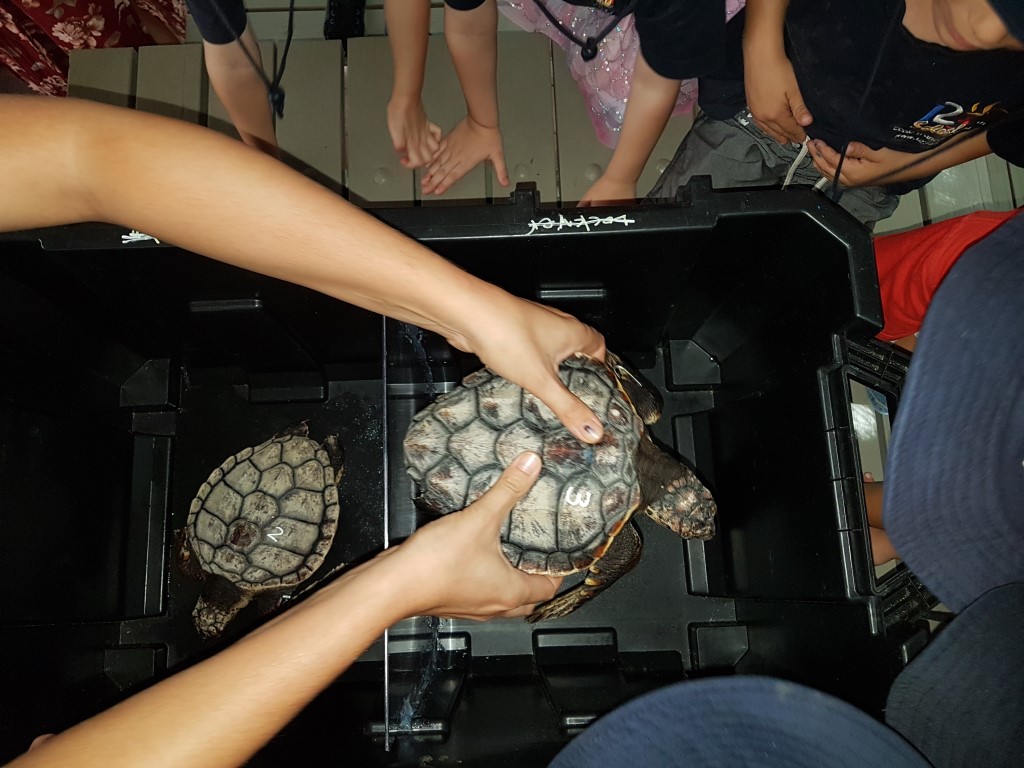A dozen lucky children from Como French School, 123 Soleil, came to DBCA to see the turtles. They learned about turtle biology and how to help them survive in the wild (for example by using less plastic).
Research scientist Sabrina Fossette spoke to the kids in French and answered all their questions:
- “How do we know where the turtles go after they are released?”,
- “What do they eat?” and
- “Do turtles poop?”.
The students are learning about life in the ocean. Seeing rare and endangered turtles up close was very timely.
Young loggerheads can wash up (strand) on beaches along the southwest coast. Stranding seems to be linked to winter storms and the strength of the Leeuwin Current.
Numbers vary each year, sometimes less than 10, but it can be more than 100.
The lucky ones found by beachgoers are reported to Wildcare helpline. These are taken to centres like AQWA and Bunbury Dolphin Discovery Centre to be cared for. They are released back into the wild in Exmouth once ready.
Naturally loggerheads swim far from shore into open ocean until they are 10-20 years old. At this stage their carapace (upper shell) is about 70cm long.
Turtles in the Pacific and Atlantic Oceans travel vast distances and cross ocean basins.
They swim with ocean currents taking refuge in natural floating debris. They feed on algae and animals like snails and crabs.
This life stage is fraught with danger and many don’t survive to become adults.
We think the story is similar for the Western Australian Loggerheads, but we don’t know for sure.
The 10-20 years between hatchlings entering the water and coming back to coastal waters is known as the “lost years”.
Stranded turtles allow us to find out more about the lost years.
In April 2018 there were 33 loggerheads released from Exmouth. These turtles weighed between 1 and 2kg and 13 were had mini satellite trackers attached.
The trackers worked for between 1 day and 11.5 months, sending information about where the turtles are after release.
Two are still working at the time of writing this article (which is rare for these small trackers).
The tracks can be viewed at: http://www.seaturtle.org/tracking/?project_id=879&dyn=1553478626.
Some turtles were carried south by the currents along the coast of Western Australia. They spent several weeks in the waters near Denmark, Walpole and as far as Esperance.
One of these turtles started making its way westward to cross the Indian Ocean. His tracker stopped about 800-900 km from the coast of Western Australia.
Other turtles swam southwest and travelled 1600 to 4600km in a straight-line from their release point. The two turtles that still have live tracks are 3330km and 6000km from their release location.
The turtles forage for food on the way, most likely along current fronts where natural floating debris gathers.
The turtle that swam the furthest is feeding in an area known as a foraging ground for adult leatherbacks, and juvenile loggerheads that started from the western side of the Indian Ocean.
The trackers give us a unique insight into the “lost years” for this species.
Tracking has shown several foraging spots for the young turtles, as well as the main migration routes they follow, after leaving their rookeries on our Western Australian shores.

